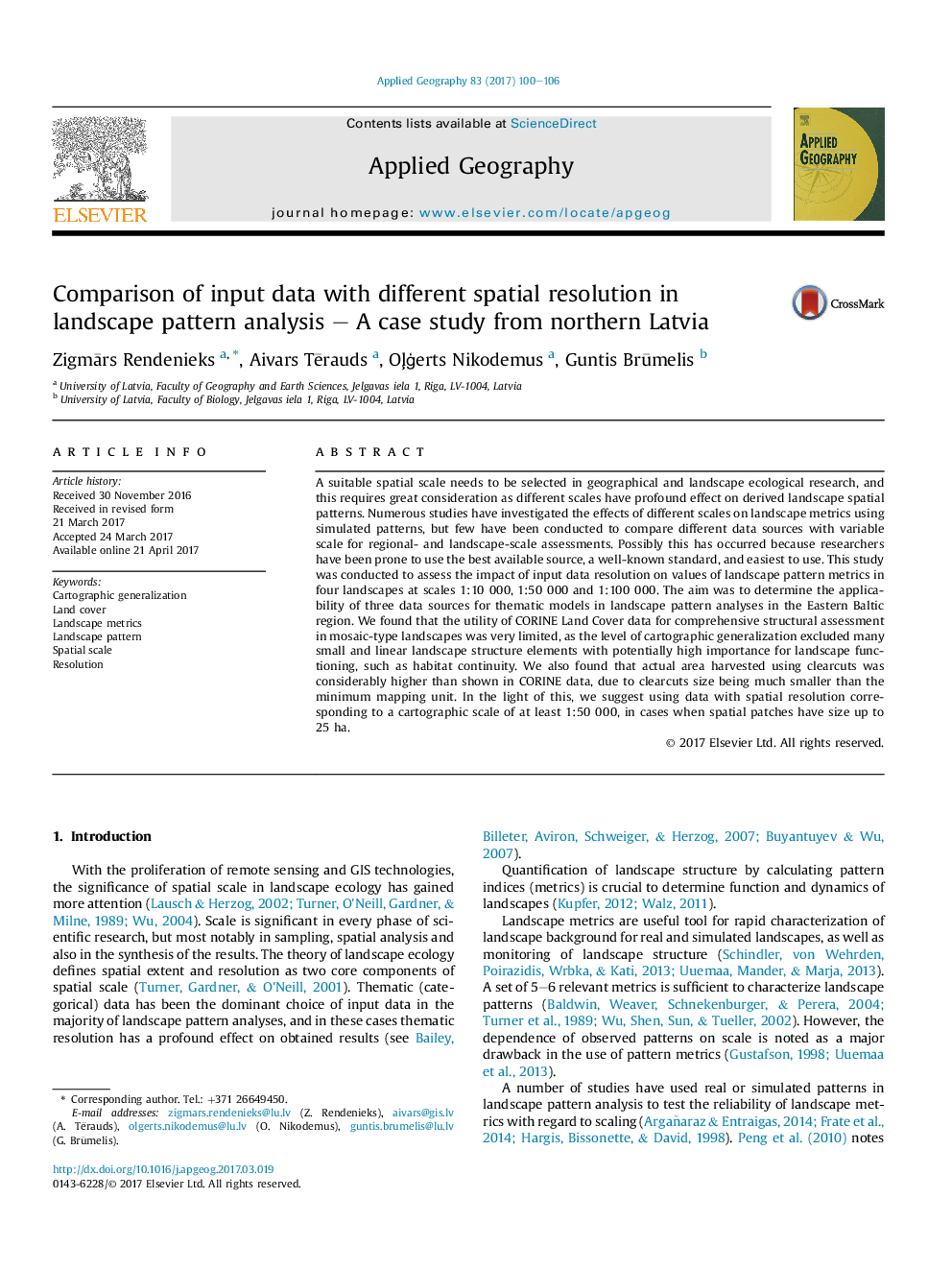| Article ID | Journal | Published Year | Pages | File Type |
|---|---|---|---|---|
| 4759040 | Applied Geography | 2017 | 7 Pages |
â¢Proximity index is especially sensitive to changes in scale in pattern analyses.â¢Mosaic-type landscape patterns have to be interpreted separately from contiguous patterns.â¢Although easily available, Corine Land Cover datasets are inappropriate for detailed landscape analyses.
A suitable spatial scale needs to be selected in geographical and landscape ecological research, and this requires great consideration as different scales have profound effect on derived landscape spatial patterns. Numerous studies have investigated the effects of different scales on landscape metrics using simulated patterns, but few have been conducted to compare different data sources with variable scale for regional- and landscape-scale assessments. Possibly this has occurred because researchers have been prone to use the best available source, a well-known standard, and easiest to use. This study was conducted to assess the impact of input data resolution on values of landscape pattern metrics in four landscapes at scales 1:10Â 000, 1:50Â 000 and 1:100Â 000. The aim was to determine the applicability of three data sources for thematic models in landscape pattern analyses in the Eastern Baltic region. We found that the utility of CORINE Land Cover data for comprehensive structural assessment in mosaic-type landscapes was very limited, as the level of cartographic generalization excluded many small and linear landscape structure elements with potentially high importance for landscape functioning, such as habitat continuity. We also found that actual area harvested using clearcuts was considerably higher than shown in CORINE data, due to clearcuts size being much smaller than the minimum mapping unit. In the light of this, we suggest using data with spatial resolution corresponding to a cartographic scale of at least 1:50Â 000, in cases when spatial patches have size up to 25Â ha.
